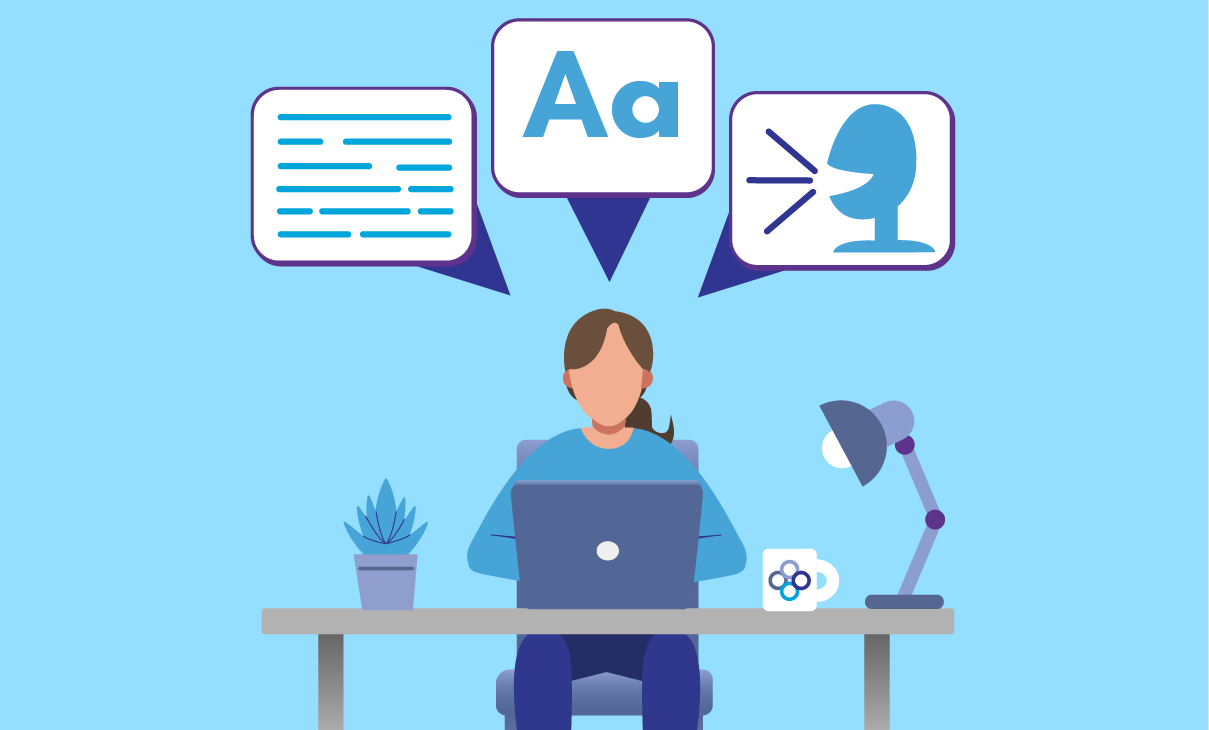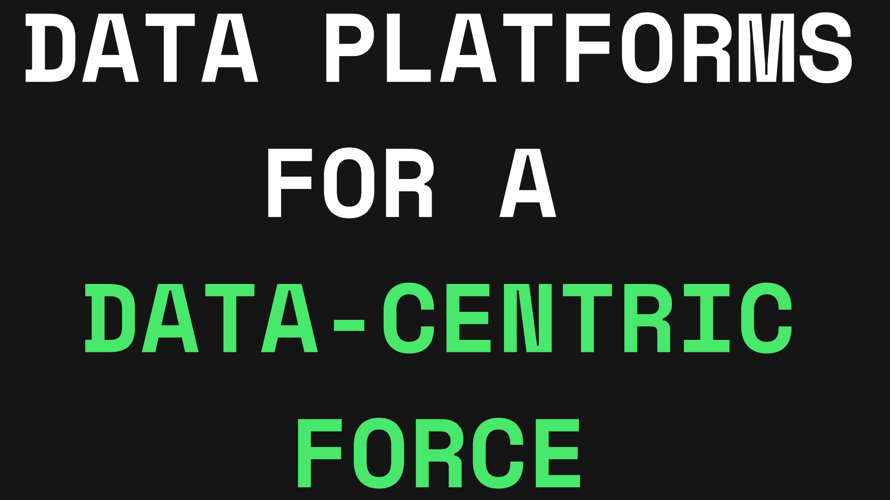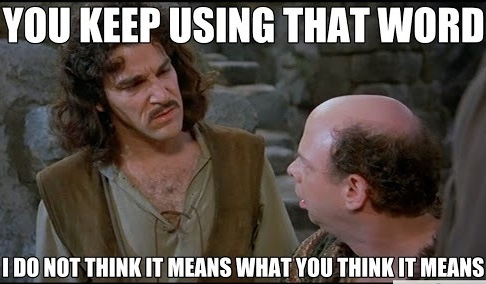Creating a Content Style Guide for Your Users
July 13, 2020 | Words by Ryan
Whether your company has a website, pushes eblasts, posts on social media, or prints handouts, having a content style guide is invaluable. When properly written, it can give any member of your team the tools to fluently speak in your organization’s voice regardless of their writing experience.
As Raft’s Content Strategist, I’ve written, followed, and modified dozens of content style guides. While creating these comprehensive documents can seems like a daunting task, below are some tips you can use to efficiently create your own content style guide without sacrificing quality.
Research an Established Guide
Every style guide should be specific to the organization it serves, but there’s no need to reinvent the wheel. Borrowing from other more established guides is a great starting point when creating your own. These guides can also provide best practice stopgaps when unique situations arise.
At Raft, I mainly rely on the three guides listed below. Digital.gov also has a comprehensive list of style guides categorized by federal organization.
AP Style Guide
Maintained and regularly updated by the Associated Press, this style guide is the preferred guide of reputable magazines and newspapers. Since it’s regularly updated to adhere to common language conventions, it’s a great choice for clear, accessible language targeted towards a general audience. While access to the style guide isn’t free, membership includes access to AP Editors and a handy search functionality.
Mailchimp Style Guide
This guide, created by email marketing platform MailChimp, is targeted towards modern digital communications. Of the guides listed here it’s the only one that specifically tailored to blog posts, social media, and other forms of web publishing with a strong focus on digital accessibility and copyright protection. The guide is free and open to the public with a Creative Commons license, making it a great resource for any organization looking to extend its reach online.
Google’s Material Style Writing Guide
If you use an Android device, Chrome Browser or any product in G Suite (like Gmail, Hangouts, etc.) you’re probably already familiar with Google’s Material Design. But
you may not know is that the open source design language also has a writing guide. While not as detailed or comprehensive as the previous guides others on this list, the material design writing guide is perfect for UX and UI elements.
Define Writing Objectives
While the writers and content strategists in your organization may fully understand the purpose of your organization’s messaging, other might not. The first few pages of a good style should address this by defining your writing goals, and the guiding principles by which they can be achieved.
Writing Goals
Consider what readers should be able to achieve while reading the materials produced by your organization. List necessary adjectives each piece of content should be. Here are some examples:
- Informative - It’s not enough to tell readers what we want to say, they should find valuable information with opportunities to learn more.
- Concise - Our reader’s time is valuable and worthy of respect. Our messaging should be direct, actionable and to the point.
- Accessible - In order to reach the widest audience available, all messaging should be easily digestible by a general audience.
Principles
Your writing principles should address each item listed in your goals using actionable verbs. Using the previously identified writing goals, I’ve included some examples below:
- Informative
- Provide links to relevant information.
- Avoid vague language.
- Fact check all material to ensure accuracy.
- Concise
- Write short sentences (<140 characters).
- Prioritize the most important information.
- Use bullet points instead of sentences when possible.
- Accessible
- Group related ideas.
- Avoid technical jargon.
- Use descriptive titles and headings
Establish Brand Voice and Tone
Most organizations have a variety of people in charge of creating it’s messaging. These individuals all have something unique to contribute but unifying these voices into one coherent and harmonious sound requires some guidance. These rules are mainly focused towards
Voice
Voice is the personality of your organization and encompasses everything from general word choice to the average sentence length. Your organization’s voice can be difficult to nail down,
but it helps to picture your organization as a person. How old would they be? What personality traits would they most frequently express? Would they feel comfortable using slang and emojis or would they be more formal and authoritative?
Tone
If voice is your organization’s personality, tone describes how that person might express themselves in the context of a particular piece of content. A Tweet celebrating a recent achievement would carry a very different tone compared to one found in a manual of programming instructions.
Generally, the tone established in your style guide should focus on the emotions you want to evoke in the mind of your target audience. In this blog for example, I’m attempting to strike an informative, yet lighthearted and encouraging tone.
Tense
Your organization’s writing should always maintain a consistent tense (either future, present, or past). Most organizations use the present tense to ensure their messaging feels relevant and timely, but there are always exceptions to the rule.
Active vs Passive Voice
We discussed active versus passive voice in our Writing Plain English Content Blog The general rule of thumb is to always speak in the active voice. That means ensuring every sentence features a clear subject that is performing an obvious task (typically to a receiving object.)
Point of View
The point of view can help establish the relationship you have with your audience. Do you want your organization to have a causal conversation with the reader, or would you rather appear as an omnipotent source of authority?
On the Raft website we use the first-person-plural to speak collectively and informally as a team. In blogs, we’ll often switch between first-person-singular narratives for more personal blogs and second-person guidance for tutorials (like this one).
Create Technical Uniformity
Creating consistency throughout your organization’s messaging is one of the most important aspects of your content style guide. As readers consume your content, you’ll begin to develop a reputation with them. Ideally, they’ll enjoy what you produce, continue to read, and expect the same level of technical quality. But as any good editor knows, meeting those expectations requires thorough attention to details that go usually unnoticed by readers if they are correctly implemented.
Word Choice and Naming Conventions
Words have power, and their selection should be carefully made. While a “traffic accident” and a “traffic collision” sound similar, they carry different legal implications. And while “color” and “colour” are both correctly spelled, the two words target different geographical audiences.
Don’t assume your writers will instinctively know which words to use and when they’re appropriate. Your style guide should carry a list of acceptable and unacceptable industry specific terms and phrases that are often used by your organization, as well as their preferred spelling, definitions, and usage.
Formats and Content Types
To make sure that organization-wide messaging is consistent across all platforms, most style guides address multiple formats and content types. Some of these mediums will have specific requirements for them to operate optimally, especially if they’re digital. Be sure to address the following aspects in the following mediums:
- Blog Posts and Website Content – Metadata Tags, SEO Keywords, Template restrictions, etc.
- Email – Graphical/HTML Text, Atl Text, Dynamic Content, etc.
- Social Media Posts – Character restrictions, Hashtags, Image dimensions, etc.
Design and Formatting Guidelines
In the digital age of publishing, content and editorial style guides should address some issues of design and format. Depending on your publishing platform, these elements may typically include:
- Font Styling - Bold, Italic, Underline, etc.
- Font Colors- Primary, secondary colors.
- Typography - Primary, secondary fonts.
- Header Tags – H1, H2, H3, etc.
- Hyperlinks – Introductory text conventions, link descriptions, etc.
- Image Guidelines – Dimensions, Quality, Content Guidelines, Captions, Alt text, Credits, etc.
House Style
As a veteran editor, I’ve participated in my fair share of discussion on technical copywriting minutiae. It seems everyone has their own opinion on the usefulness of the oxford comma. Regardless of your stance, consistency in usage is always correct. Using an established style guide will free you from making these minor decisions. Here are a few of the questions you’ll want to consider:
- Should items in bulleted lists include capitalizations and periods?
- How should dates, times, phone numbers, and addresses be formatted?
- Should ordinal numbers be spelled out or include ordinal indicators (like nd, th, rd, etc.) Also, if you do plan to use ordinal indicators, should they be in superscript?
- When should numerals be spelled out, if at all? Does this rule also apply to larger numbers with multiple digits or money?
Closing
A content style guide is not a stuffy, static grammar rulebook. Many of the rules can vary depending on the needs of your organization. Style guides are also constantly subject to change as language use and culture evolve. The goal of these guides isn’t to police what language your organization uses, but to guide writers to create a welcoming, uniform public-facing content.



